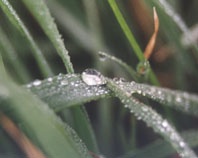
The techniques used to monitor atmospheric corrosion are ER (Electrical Resistance), EIS (Electrochemical Impedance Spectroscopy), Current and Voltage Noise and LPR (Linear Polarisation Resistance). Depending on the amount of moisture present the atmospheric scientist can choose from a number of ACM Instruments monitoring systems. A common problem is dew point corrosion. This occurs when the conditions are right to form a liquid layer on the surface of the metal. A simple probe made from two interlaced combs of metal separated by insulators and ground flat proves very effective at identifying periods of dew point, and measuring the resultant corrosion. The instrument of choice for this is the Gill AC. Using current and voltage the onset of dew point is rapidly detected. The corrosion rate is found using LPR if the film is relatively conductive (perhaps contaminated with salts) or AC impedance for a more resistive layer. If the test site is remote our new internet control of the Gill AC may be used with a mobile phone connection to connect the instrument to the internet a few times per day to download data and upload any new measurement sequence. For multichannel testing our Gill 8 is the preferred instrument.
Often corrosion occurs in crevices that don't dry as quickly as the surrounding metal. This can be monitored by the use of crevice probes and instrumentation. Current and Voltage Noise and simple LPR have both been used successfully with such probes. The LPR 485 is an ideal system for distributed probes in large buildings. The standard instrument for all tests out of the laboratory is the Field Machine. This can perform both AC and DC Electrochemical tests plus, as an option, Electrical Resistance. When the environment does not develop a layer of moisture it can prove impossible to use any electrochemical technique. This is where the measurement of resistance is useful, the thinner and more corroded the specimen gets the higher the resistance measured, from this the corrosion rate is calculated.
Monitoring Atmospheric corrosion is not easy but, equipped with ACM's dedicated instruments the scientist and engineer can, with a little thought, measure, record and analyse from probes designed for the job.
See Application Notes for more information on AC Impedance, ER, Current and Voltage Noise and LPR techniques.
See Downloads for instrumentation datasheets.
